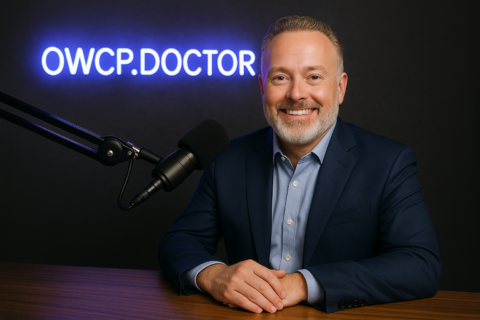Shoulder Surgery Success: How Physical Therapy Can Help You Regain Function and Confidence
Shoulder Surgery Success: How Physical Therapy Can Help You Regain Function and Confidence

Shoulder injuries can be debilitating and leave you feeling like you’ll never fully recover. But with the right treatment plan, including shoulder surgery and physical therapy, you can regain your function and confidence. The key is to find a skilled surgeon and physical therapist who understand the intricacies of the shoulder joint and can guide you through the healing process. In this article, we’ll explore how physical therapy plays a crucial role in shoulder surgery success. We’ll look at the benefits of post-surgical rehabilitation, the types of exercises you may do, and what you can expect in terms of recovery time. Whether you’ve recently undergone shoulder surgery or are considering it as an option, this article will provide you with the information you need to make an informed decision and take the first steps towards regaining your mobility and independence.
Understanding Shoulder Injuries and Surgery
The shoulder is a complex joint that allows for a wide range of motion. It is made up of three bones: the humerus (upper arm bone), scapula (shoulder blade), and clavicle (collarbone). The joint is surrounded by a network of muscles, tendons, and ligaments that work together to provide stability and mobility.
Shoulder injuries can occur due to a variety of reasons, including sports injuries, falls, and repetitive overhead motions. Common shoulder injuries include rotator cuff tears, labral tears, and shoulder impingement syndrome. In some cases, surgery may be necessary to repair or reconstruct damaged tissues in the shoulder joint.
Shoulder surgery can be performed arthroscopically or through open surgery. Arthroscopic surgery involves using a small camera and instruments to repair or replace damaged tissues in the shoulder joint. Open surgery involves making a larger incision to access the damaged tissues. Your surgeon will determine the best approach based on the type and severity of your injury.
The Importance of Post-Surgical Rehabilitation
Physical therapy is a critical component of the shoulder surgery recovery process. After surgery, your shoulder will be immobilized for a period of time to allow the tissues to heal. However, immobilization can lead to muscle weakness and stiffness, which can hinder your ability to regain full function of your shoulder.
Physical therapy can help to prevent these complications by restoring range of motion, strength, and flexibility to the shoulder joint. Your physical therapist will work with you to develop a customized rehabilitation plan that is tailored to your specific needs and goals.
Benefits of Physical Therapy for Shoulder Surgery Recovery
Physical therapy offers a wide range of benefits for shoulder surgery recovery. Here are some of the key advantages:
1. Improved Range of Motion
Physical therapy can help to improve your shoulder’s range of motion by stretching and mobilizing the tissues in and around the joint. Your physical therapist will use a variety of techniques, such as passive range-of-motion exercises, active-assisted range-of-motion exercises, and self-stretching exercises, to help you regain your shoulder’s full range of motion.
2. Increased Strength
After surgery, your shoulder muscles may be weak due to immobility. Physical therapy can help to strengthen these muscles through exercises that target the rotator cuff, deltoid, and other muscles in the shoulder complex. Your physical therapist will gradually increase the intensity of your exercises over time to help you build strength safely and effectively.
3. Reduced Pain and Inflammation
Shoulder surgery can cause pain and inflammation in the joint. Physical therapy can help to reduce these symptoms by using modalities such as ice, heat, and electrical stimulation. Your physical therapist may also use manual therapy techniques, such as massage and joint mobilization, to help alleviate pain and improve joint mobility.
4. Improved Function and Performance
Physical therapy can help you regain your shoulder’s full function and performance. Your physical therapist will work with you to develop a customized exercise program that is designed to help you achieve your specific goals, whether that’s returning to sports, work, or daily activities.
Types of Exercises for Shoulder Surgery Rehabilitation
There are several types of exercises that may be included in your shoulder surgery rehabilitation program. Here are some of the most common:
1. Range-of-Motion Exercises
Range-of-motion exercises are designed to help you regain your shoulder’s full range of motion. These exercises may include passive range-of-motion exercises, where your physical therapist moves your shoulder for you, active-assisted range-of-motion exercises, where you use your non-injured arm to assist in moving your injured arm, and self-stretching exercises, where you stretch your shoulder on your own.
2. Strengthening Exercises
Strengthening exercises are designed to help you rebuild the strength in your shoulder muscles. These exercises may include rotator cuff exercises, shoulder blade exercises, and deltoid exercises. Your physical therapist will gradually increase the intensity of your exercises over time to help you build strength safely and effectively.
3. Neuromuscular Re-education Exercises
Neuromuscular re-education exercises are designed to help you regain control and coordination of your shoulder muscles. These exercises may include balancing exercises, proprioception exercises, and scapular stabilization exercises.
4. Functional Exercises
Functional exercises are designed to help you regain your shoulder’s full function and performance. These exercises may include sport-specific exercises, work-specific exercises, and activities of daily living exercises.
Timeline for Shoulder Surgery Rehabilitation
The timeline for shoulder surgery rehabilitation can vary depending on the type and severity of your injury, as well as your individual healing process. However, here is a general timeline for what you can expect:
Week 1-6: Immobilization and Gentle Range-of-Motion Exercises
During the first few weeks after surgery, your shoulder will be immobilized to allow the tissues to heal. You may also perform gentle range-of-motion exercises, such as pendulum exercises and passive range-of-motion exercises, to prevent stiffness and improve circulation.
Week 6-12: Gradual Strengthening Exercises
After the initial healing period, you will begin performing strengthening exercises to rebuild the strength in your shoulder muscles. Your physical therapist will gradually increase the intensity of your exercises over time to prevent re-injury.
Week 12-24: Functional and Sport-Specific Exercises
As you regain strength and mobility in your shoulder, you will begin performing functional and sport-specific exercises to help you return to your normal activities. Your physical therapist will work with you to develop a customized exercise program that is tailored to your specific goals.
Beyond 24 Weeks: Maintenance and Prevention
After completing your rehabilitation program, it’s important to continue performing maintenance exercises to prevent re-injury and maintain your shoulder’s strength and mobility. Your physical therapist may recommend exercises that you can do at home or in a gym setting to help you stay healthy and active.
Tips for a Successful Shoulder Surgery Recovery
Here are some tips for a successful shoulder surgery recovery:
1. Follow your rehabilitation plan
It’s important to follow your rehabilitation plan as closely as possible to ensure a successful recovery. Your physical therapist will develop a plan that is tailored to your specific needs and goals, so it’s important to stick to it.
2. Stay active
It’s important to stay active throughout your recovery process to prevent stiffness and promote circulation. Your physical therapist may recommend low-impact activities, such as walking or swimming, to help you stay active.
3. Take pain medication as prescribed
If you’re experiencing pain after surgery, your surgeon may prescribe pain medication to help alleviate your symptoms. It’s important to take your medication as prescribed to help you manage your pain and stay comfortable.
4. Rest and recover
Rest is an important part of the recovery process, so it’s important to give your body time to heal. Your physical therapist may recommend rest breaks throughout the day to help you avoid overuse injuries.
5. Communicate with your healthcare team
If you have any questions or concerns about your recovery process, don’t hesitate to communicate with your healthcare team. They are there to help you and can provide you with the support and guidance you need to achieve a successful recovery.
Finding the Right Physical Therapist
Finding the right physical therapist is a critical part of the shoulder surgery recovery process. Here are some tips for finding a skilled and experienced physical therapist:
1. Look for a specialist
Look for a physical therapist who specializes in shoulder rehabilitation. They will have the expertise and experience needed to help you achieve a successful recovery.
2. Ask for recommendations
Ask your surgeon or primary care physician for recommendations for physical therapists in your area. You can also ask friends or family members who have undergone shoulder surgery for recommendations.
3. Research potential physical therapists
Do some research online to learn more about potential physical therapists. Look for reviews, testimonials, and credentials to help you make an informed decision.
4. Schedule a consultation
Schedule a consultation with potential physical therapists to learn more about their approach to rehabilitation and determine if they are a good fit for you.
Frequently Asked Questions About Shoulder Surgery Recovery
1. How long does it take to recover from shoulder surgery?
The recovery time for shoulder surgery can vary depending on the type and severity of the injury. However, most people can expect to take between 6-12 months to fully recover.
2. Will I need to wear a sling after surgery?
Yes, you will likely need to wear a sling for a period of time after surgery to immobilize your shoulder and allow the tissues to heal.
3. Will I be able to return to sports after shoulder surgery?
In most cases, you will be able to return to sports after shoulder surgery. However, it’s important to follow your rehabilitation plan closely and work with your physical therapist to ensure a safe and successful return to sports.
4. Will I need to undergo physical therapy after surgery?
Yes, physical therapy is a critical component of the shoulder surgery recovery process. Your physical therapist will work with you to develop a customized rehabilitation plan that is tailored to your specific needs and goals.
Success Stories: Real-Life Examples of Shoulder Surgery Recovery
Here are some real-life examples of individuals who have successfully recovered from shoulder surgery:
1. John’s Story
John is a 35-year-old construction worker who underwent rotator cuff surgery after sustaining an injury on the job. With the help of his physical therapist, John was able to regain full range of motion and strength in his shoulder, and return to work without limitations.
2. Sarah’s Story
Sarah is a 26-year-old college athlete who underwent shoulder surgery to repair a labral tear. With the help of her physical therapist, Sarah was able to return to her sport and compete at a high level within 12 months of her surgery.
3. Frank’s Story
Frank is a 50-year-old accountant who underwent shoulder surgery to repair a torn rotator cuff. With the help of his physical therapist, Frank was able to regain his strength and mobility, and return to his regular activities without pain or limitation.
Conclusion: Regaining Function and Confidence After Shoulder Surgery
Shoulder injuries can be devastating, but with the right treatment plan, including shoulder surgery and physical therapy, you can regain your function and confidence. Physical therapy plays a critical role in the shoulder surgery recovery process, helping to restore range of motion, strength, and flexibility to the shoulder joint. By following your rehabilitation plan closely, staying active, and communicating with your healthcare team, you can achieve a successful recovery and return to your normal activities with confidence.
Meet Our Physical Therapist
Dr. Chris Egorugwu



